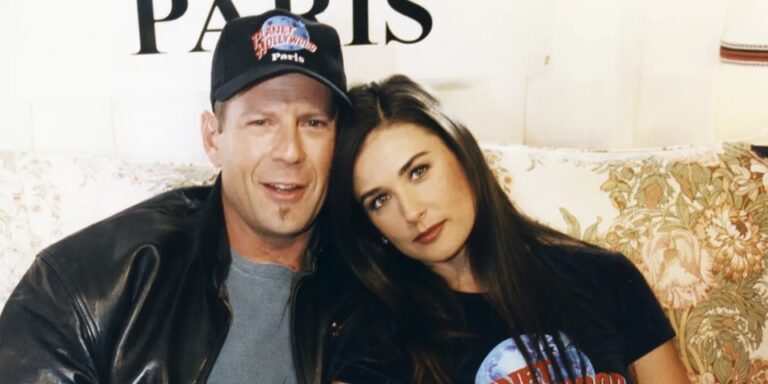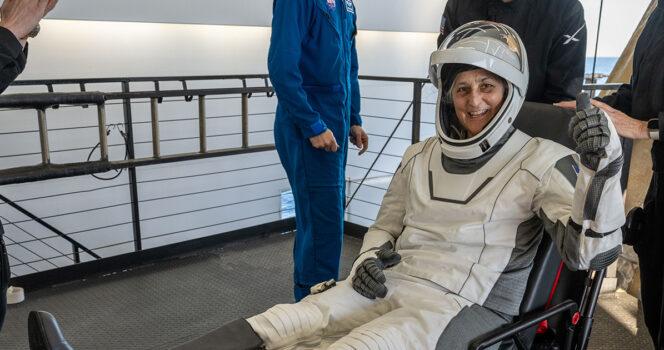As a Girl, This Woman Lived in a Tiny Apartment & Her Father Worked At A Water Plant While Battling Multiple Sclerosis

The well-known figure often acknowledges her modest upbringing and the invaluable influence of her parents in shaping the person she has become. Take a look at her early years before she emerged as one of the most distinguished names in American history.
As a young girl, she lived in a small apartment, witnessing her father work tirelessly at a water plant while managing multiple sclerosis. Instead of letting hardships define her, she gained the confidence and drive to excel, forging her own path.
Those early experiences influenced her outlook and drove her ambition. Raised near the railroad tracks in a diverse,
In November 2018, she welcomed ABC News into her childhood home, offering a glimpse into the place that molded her and sharing stories of her early years.

The woman’s former childhood home pictured on November 12, 2018 | Source: YouTube/ABCNews
That visit to her home on Euclid Avenue — once owned by her great-aunt Robbie and uncle Terry, where three generations of her family had lived — brought back vivid memories.
She, her brother Craig Robinson, and their parents Fraser and Marian Robinson, lived in a tiny upstairs apartment above the home her great-aunt Robbie and uncle Terry had purchased. Robbie was a teacher, and Terry worked as a Pullman porter, which allowed them to buy a house in what was then a
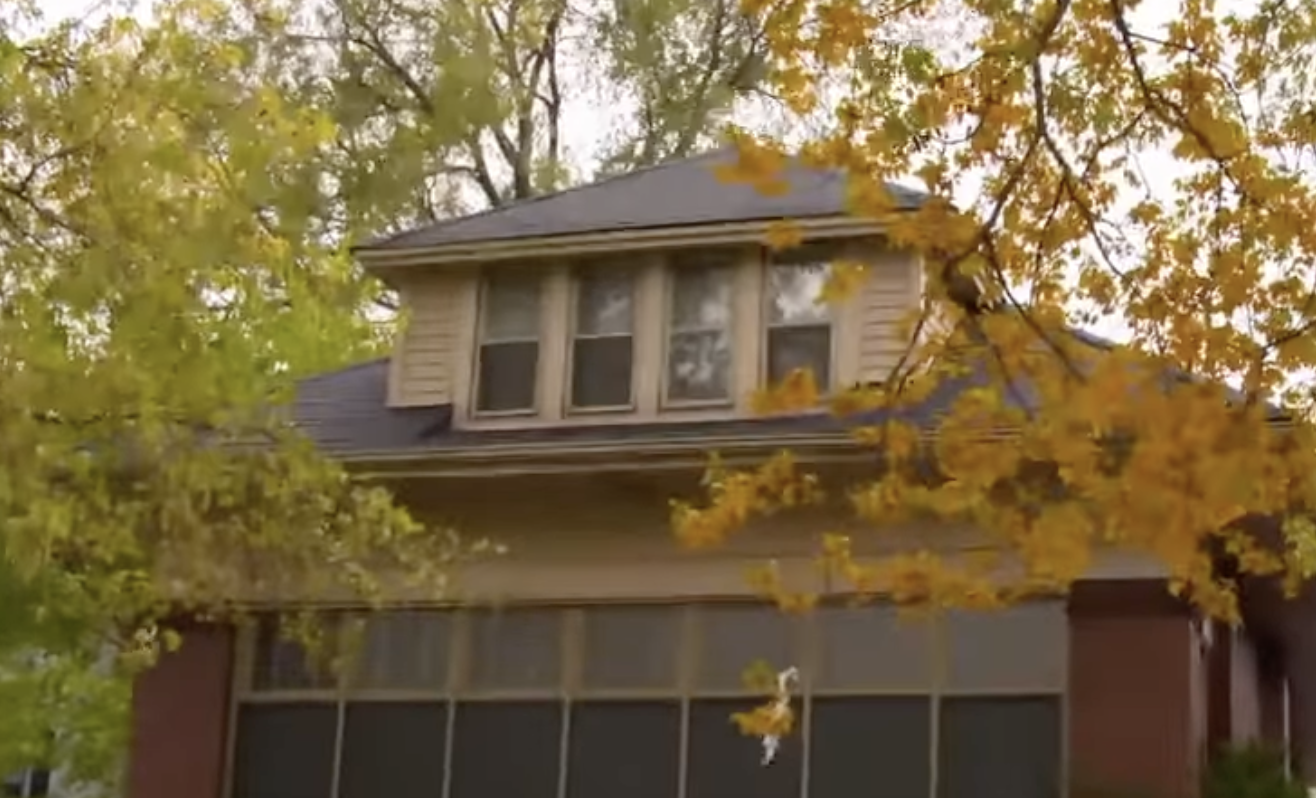
The upstairs apartment where the woman used to live as a child seen on November 12, 2018 | Source: YouTube/ABCNews
Space was limited, and what might have been the living room had been divided into three sections to create makeshift bedrooms. The woman and her brother each had just enough room for a twin bed, with only wood paneling separating them.
The setup made it easy to talk through the thin dividers. “Craig?” she
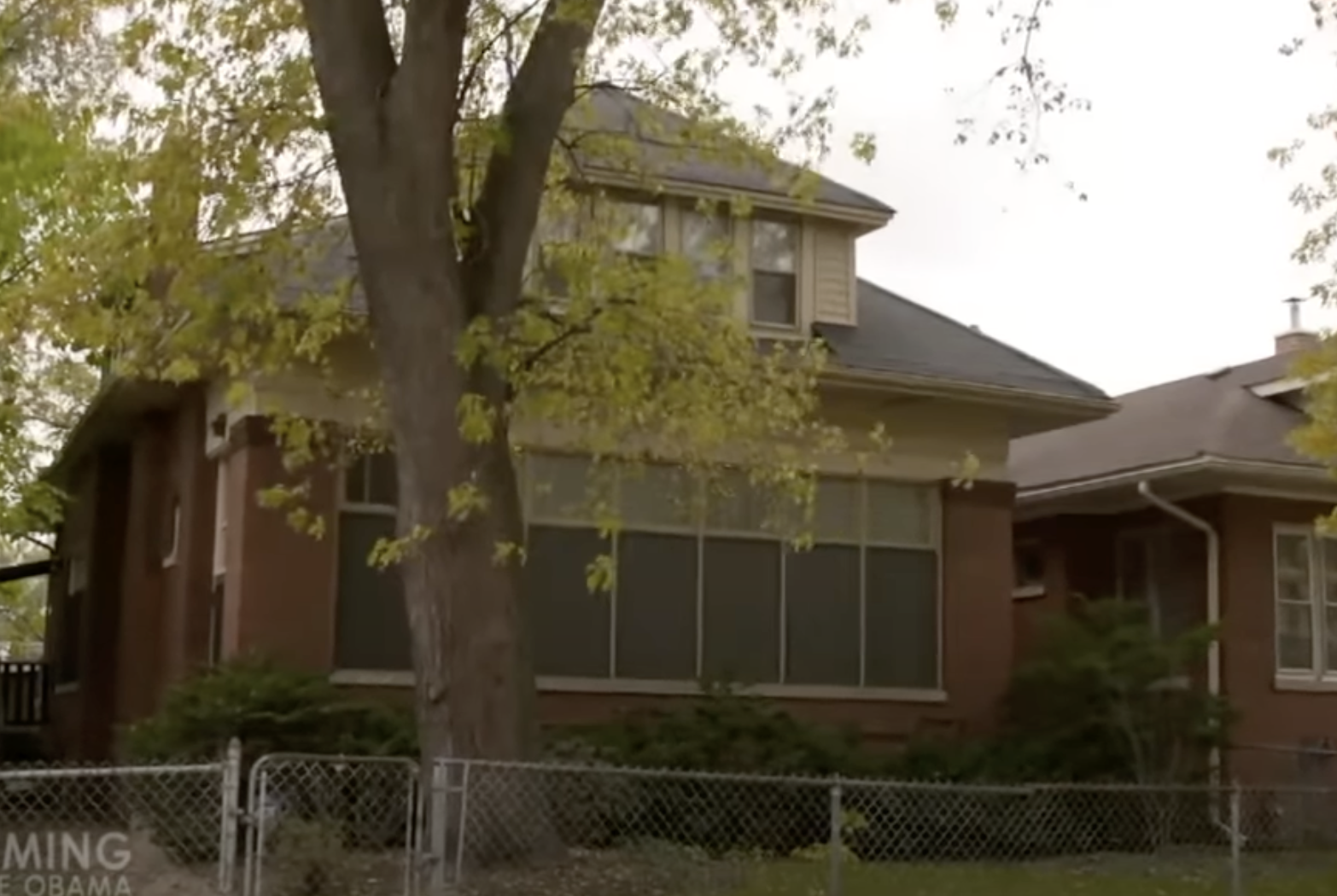
The woman’s former childhood home photographed on November 18, 2018. | Source: YouTube/ABCNews
Their tight quarters led to playful moments, including a game where they tossed a sock over the paneling to each other. Though the apartment was small, it was filled with warmth, connection, and lessons that would stay with her.
Despite their life was modest, it never felt lacking. “We lived a humble life, but it was a full life,” she
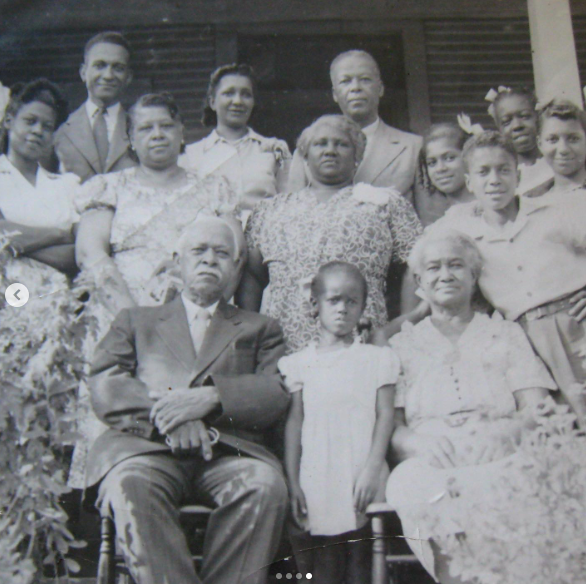
The family in a group photo, dated January 2023 | Source: Instagram/michelleobama
On occasion, a small celebration included pizza or ice cream, but there were no elaborate prizes — just the expectation to strive for excellence.
Over time, the neighborhood transformed. Initially, most of the residents were white, but as time passed, it became a largely African American community. Those changes were reflected in the area and the schools, where resources became noticeably scarce.
Even as a first grader, she recognized what was missing. “This notion that kids don’t know when they’re not being invested in — I’m here to tell you that as a first grader, I felt it,”
That early awareness of her surroundings was matched by the independence her mother encouraged. She once recalled walking to school on her own, a decision Marian made when she was just five years old.
“Mom insisted it was time for me to walk to and from elementary school all by myself,” the public figure
Though fear crept in, her mother’s confidence in her abilities
That belief instilled a deep sense of self-trust, transforming uncertainty into pride. The experience became a defining moment — one that shaped her independence and sense of agency from an early age.
That foundation of independence was strengthened by the close-knit environment she called home. Stepping into the apartment, she often
Whenever someone faced hardship, they would return to that familiar space, making it an inheritance of sorts — a place that always offered stability in uncertain times.
That sense of home provided comfort, but stepping outside those walls presented challenges of its own. Her father, Fraser, worked at a water plant, while her mother stayed home to care for the family.
Both prioritized education and excellence, instilling those values in their children. However, for their daughter, navigating the world beyond their apartment wasn’t always easy.
At ten years old, she was confronted with a moment that made her question where she fit in. A cousin
“And it was because of my speech. […] When you grow up in the neighborhood, you can get your butt kicked going to school if you look too uppity or if you were studying too hard,” the woman
That experience made her more aware of the balance she needed to find — staying connected to her roots while striving for excellence. Her mother played a key role in shaping that understanding, helping her develop a strong sense of self.
Both Marian and Fraser encouraged their children to be outspoken, ask questions, and think critically. “They encouraged us to understand the context,” their daughter
At the same time, there were clear boundaries. If she or her brother pushed too far, they would get a certain look or, at times, a spanking. “They weren’t free-willing parents, they were still black parents,” she
Discipline and respect were just part of the lessons their parents instilled. Marian and Fraser also wanted their children to think for themselves and understand the realities of life. Fraser, in particular, taught them the
When her brother questioned why he couldn’t always have what he wanted, their parents were direct — they weren’t rich. They made it clear that money had to be earned and carefully managed, showing them firsthand how income came in and where it had to go.
Those lessons in financial responsibility were accompanied by another reality — having a parent with a disability. “Most people know my father had multiple sclerosis (MS),” the Chicago native
“We had to make adjustments and be very adaptable as a family to make sure he could get to and from places. We learned that at an early age. So, we were cautious. We were vulnerable in ways that we probably didn’t even realize. But, we also saw him fall and get up and keep going,” she
Her father’s determination left a lasting impression. Despite the challenges of MS he never allowed the condition to define him. “He was not a man that felt sorry for himself,” she
“He adapted his tools in order to keep working. The cane became two crutches, which later became a walker, but he never stopped getting up. He just used those tools to adapt,” the public figure
That mindset shaped how she approached life. Excellence, punctuality, and perseverance became priorities. No setback was an excuse to stop moving forward. “The kind of ‘I’ll show you’ attitude — it came from watching him,” she
That determination was rooted in the sacrifices she witnessed at home. Her parents prioritized their children’s future over material comforts. “They invested everything in us,” the woman
Though they never made their children feel guilty, she
Seeing her parents’ sacrifices motivated her to excel academically. A standout student, she earned a place at Whitney Young High School, Chicago’s first magnet school. Though she questioned whether she was good enough to be there, she thrived.
In 1981, she was accepted to Princeton University, an experience she
After establishing herself as an attorney, Michelle Obama (née Robinson) met Barack Obama, and the two married in 1992. They later welcomed their daughters, Malia in 1998 and Sasha Obama in 2001.
Her role as a devoted wife and mother evolved when she became the United States’ First Lady, supporting her husband as he served as the 44th president from 2009 to 2017. More than three decades later, their bond remains strong.

Michelle and Barack Obama during a Hanukkah reception in The East Room at The White House on December 14, 2016, in Washington, D.C. | Source: Getty Images
In October 2024, she
Beyond her role as a wife, mother, and former First Lady, Michelle has also made her mark as an author. She has written “Becoming” (2018), “The Light We Carry” (2022), a
Describing the purpose of her latest book, she
Her experiences and achievements are deeply rooted in the values her parents instilled. She acknowledges that the lessons they taught, the support they provided, and the love they showed were the



